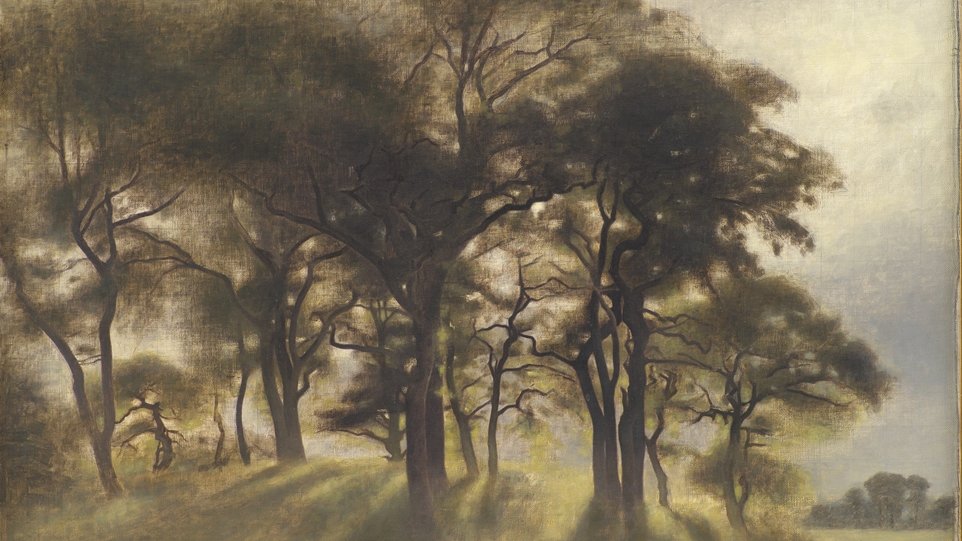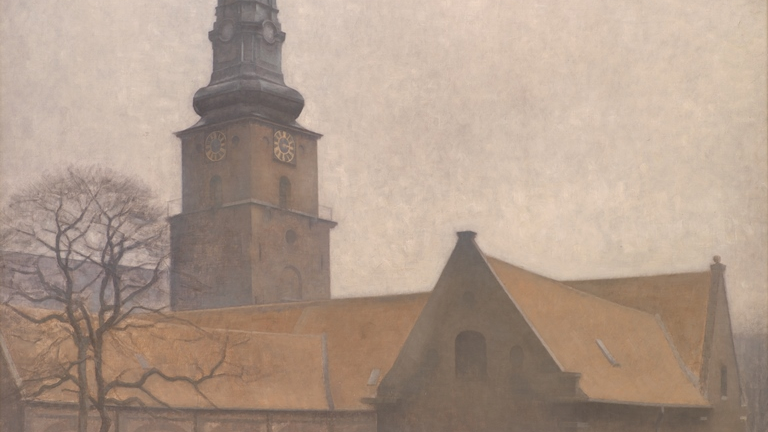Light and Silence: What drives him when he paints?

Prepared in cooperation with the Statens Museum for Kunst in Copenhagen, the exhibition is to become the first time that the artist's work is presented in Poland. This gives the viewers a lot to be happy about and a lot to wait for. Based on early expressions of interest, it appears the exhibition will attract sizable crowds. After all, born in 1864 in Copenhagen, Hammershøi is considered to be among the most prominent Scandinavian painters of the late 19th and early 20th centuries. There is a good reason why his works, which are scattered widely around the globe, feature prominently in the world's largest and most eminent museums and galleries.
This being the first presentation of the works by Vilhelm Hammershøi in Poland, the curator Martyna Łukasiewicz wanted to present a cross-section of his common themes. She therefore selected portraits, which were the predominant form of expression early in his artistic career, as well as landscapes and depictions of architecture, which are the kinds of paintings he is best known for and arguably his trademark. They portray interiors with mysterious silhouettes of women, usually with their backs turned towards the viewer. It is precisely such paintings with sparse, monochrome colours and a minimalist collection of items within the space they depict that have gained the recognition of art lovers, critics and art researchers trying to unravel the symbolism behind them. And symbolic they are as, although the artist painted them quite realistically, he also embedded puzzling overtones and character, drawing the viewer into a mysterious world of his creation that is seemingly but not entirely familiar.
The viewer, who usually takes on the role of a voyeur, is offered a sneak peek at figures frozen in mid-motion. He is left guessing that perhaps the silence is only temporary, and that the emptiness has something unnatural about it. And yet, he is unable to venture deeper into that space and remain there until the silence is broken. Neither can the viewer cross into the room, no matter how tantalised he might be by the dark corridors and open doors looming in the background that lead to further rooms.
Hammershøi's talent was recognised early, during his studies at the Copenhagen Academy of Fine Arts. Today he invariably fascinates art lovers. Over the years, many historians have attempted to figure out the proper way to interpret his art and identify his key influences. Attempts were also made to explain his work through the lens of the knowledge of the period in which he happened to live, as well as his disposition, finding parallels between his reticent and somewhat withdrawn nature and the persistent darkness of his art. Interviewed about his work, he would often not so much answer evasively as simply admit he did not know what drove him when he painted. During a 1907 interview, he was asked why he painted so many interiors. His straightforward reply was that it was because so many people found them appealing. Asked about his choice of colours, he did not scramble for a forced answer. Struggling at a loss, he would frankly admit that these were simply the colours he found to be natural. The interviewers who tried to extract any more information would get nowhere and be left with the conviction that his art simply reflected his taciturn and distant if not introverted personality.
It is not easy today to tell how honest the painter's answers were or whether he was simply being reluctant to discuss his work. Either would be quite reasonable. However, such restraint may have stripped the interpretations of Hammershøi's art of some depth. The belief that art is derived from one's personal experience seems unsatisfactory. Just as the assertion that the artist was part of some sort of a melancholic Nordic trend that framed everything into existential questions, a sense of loneliness, alienation and a mournful tone. It also seems all too obvious to compare the artist with the Dutch masters, such as Vermeer or Whistler, the latter being more of his contemporary, although similarities abound in their choice of the subject matter and colours, their use of light and the specific atmosphere they conjure up. Not even all this offers a sufficient explanation.
The "light" and "silence" in the title of the exhibition is a reference to two prominent qualities in Hammershøi's paintings. My personal opinion, though, is that neither should be seen in a biased way and that the words are meant to be slogans that inspire one's own explorations and interpretative conclusions, which may vary from person to person, and encourage people to see the artist from a broader perspective.
Justyna Żarczyńska
translation: Krzysztof Kotkowski
Exhibition: Vilhelm Hammershøi. Light and Silence
National Museum of Poznań
Open from 21 November to 6 February
Curated by Martyna Łukasiewicz
© Wydawnictwo Miejskie Posnania 2021
See more

Waltzes, jazz songs and carols

From One Celebration to Another

Christmas Markets and Fairs with Attractions




